An invitation to a godson’s wedding in Romania suggested a holiday destination this summer. Why not combine this wedding with exploring a country we knew little about? Duncan did his research, and got quite excited about the prospect of a bird-watching expedition to the Danube delta. But our trip organiser had better ideas: she had done her homework you see, and found out what I did for a living. So instead of a week of peaceful birding, Duncan got dragged around the villages of Transylvania, listening to me playing the organ.
Transylvania sits in the centre of Romania and is a pleasing landscape of rolling hills covered with a patchwork of forest, pasture, scrub and farmland. Fields are still laid out in wide medieval-style strips of sunflowers, maize and wheat, with the occasional hop-yard, and vineyards (wrecked by Communist meddling) being replanted on favoured slopes. Traditional farming practices create a countryside full of wildflowers; storks nest on chimney stacks and telegraph poles; and the horse and cart is still a meaningful form of transport. Only the occasional set of concrete barracks rotting in the valleys is a reminder of Ceaucescu’s ultimately failed attempt to impose Communist collective farming on the people and landscape.
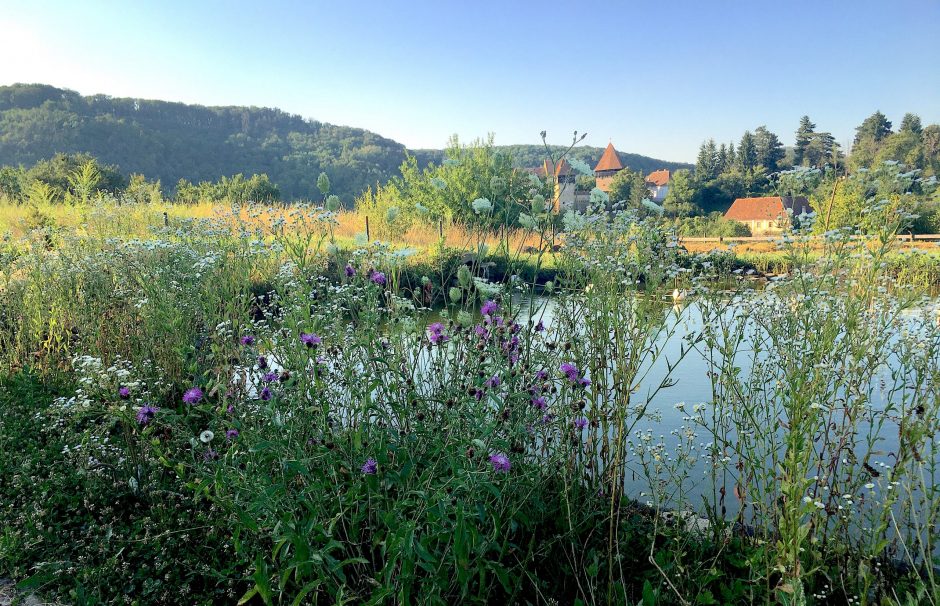
Four ethnic groups – Hungarians, Saxons, Romanians, and the Roma gypsies – have been living side-by-side here for centuries, each with its own distinctive musical traditions. Parts of Romania look towards the Orthodox Church: we witnessed a service on Sunday in Bucharest led by a small choir of women (including Orthodox nuns) standing around a lectern as per a manuscript from the Middle Ages, singing chant from Orthodox notation, the only accompaniment being the hummed ison or drone. At a festival in Meschendorf celebrating the Saxon traditions we watched decorous folk dancing to German oompah-band music: a world away from the wild fiddle and cimbalom of the Roma gypsy band at the wedding the night before. The Saxons were people of German ethnicity from all over the Holy Roman Empire, invited to settle in Transylvania from the 12th century onwards, to help defend the area against foreign invaders. They brought their language and customs, and built churches.
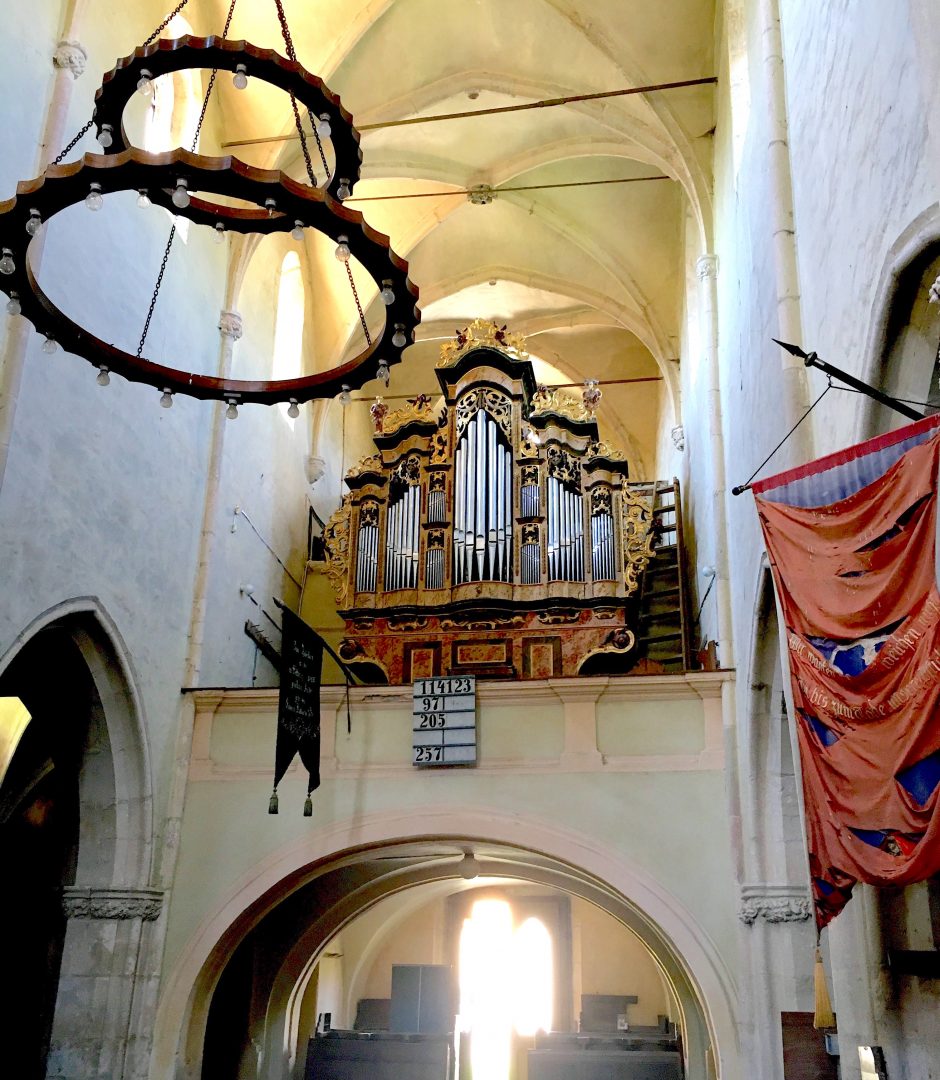
The threat to the peoples of Transylvania always came from outside, rather than from internal differences. For thousands of years this part of Europe has been an invading ground (and as we know that’s not finished yet). A rapacious army could appear from any direction, and in response towns and villages initally thought a protective fort on top of a hill would be a local asset. But getting all the villagers and their livestock up there in a hurry proved problematic, so they had a better idea: to fortify the church in the middle of town instead. There are still around 150 of these fortified churches in good shape, several recognised as UNESCO World Heritage sites.
The Saxons of Transylvania were Catholic to begin with, becoming Lutheran with the Reformation. To accompany their Lutheran chorales they needed an organ. And all over Transylvania these little organs (dating from the 17th century onwards) have survived in their fortified churches: often more due to neglect over the years than anything else. Some are in better condition than others, but thanks to care and restoration, many now are playable.
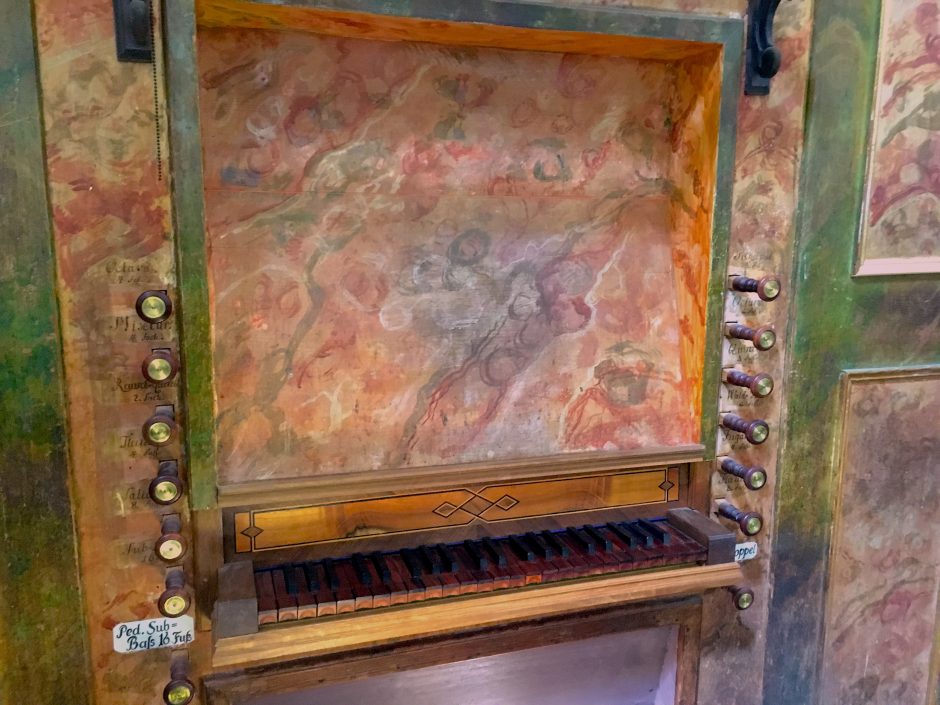
Viscri
Slightly baffled by the layout at the church in Viscri, I couldn’t work out where the organ console was, until I learned this altarpiece was built on the ‘liturgical pillar’ principle, common in Germany: the music, doctrine and liturgy all emanating from the same place. You will have realised that this has to mean that organ console is up on the back of the liturgical pillar, with no sightlines whatever. I asked Gerhilde Gross, the organist there, how on earth she kept up with the service. ‘It’s not a problem,’ she said with a smile, ‘It’s always the same!’
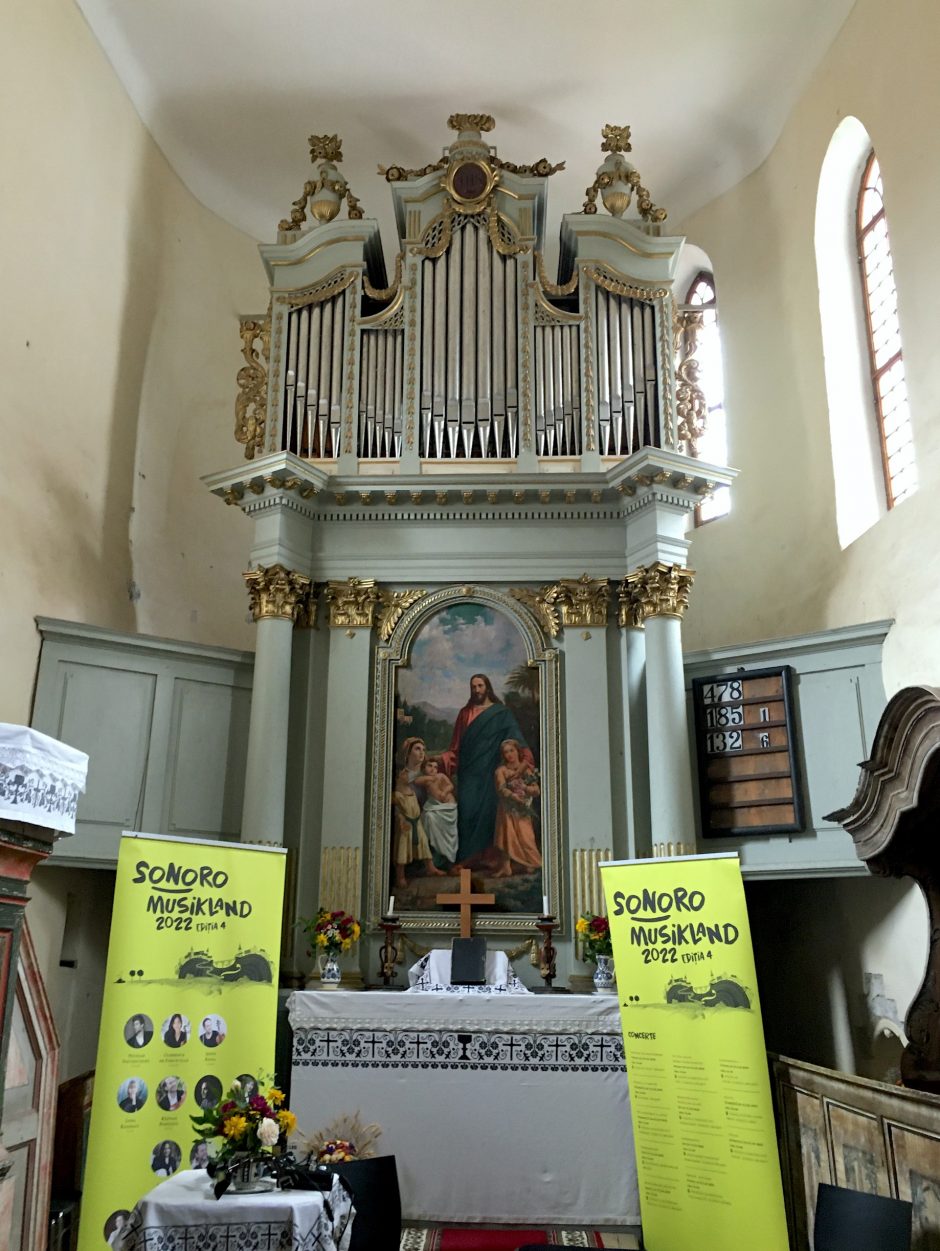
Meschendorf
Making these organs heard is an important part of their future survival. Bruno Roth, organist at the nearby town of Sighisoara, was here at Meschendorf giving a recital for a local festival, and I popped up the stairs afterwards and asked to see the organ.
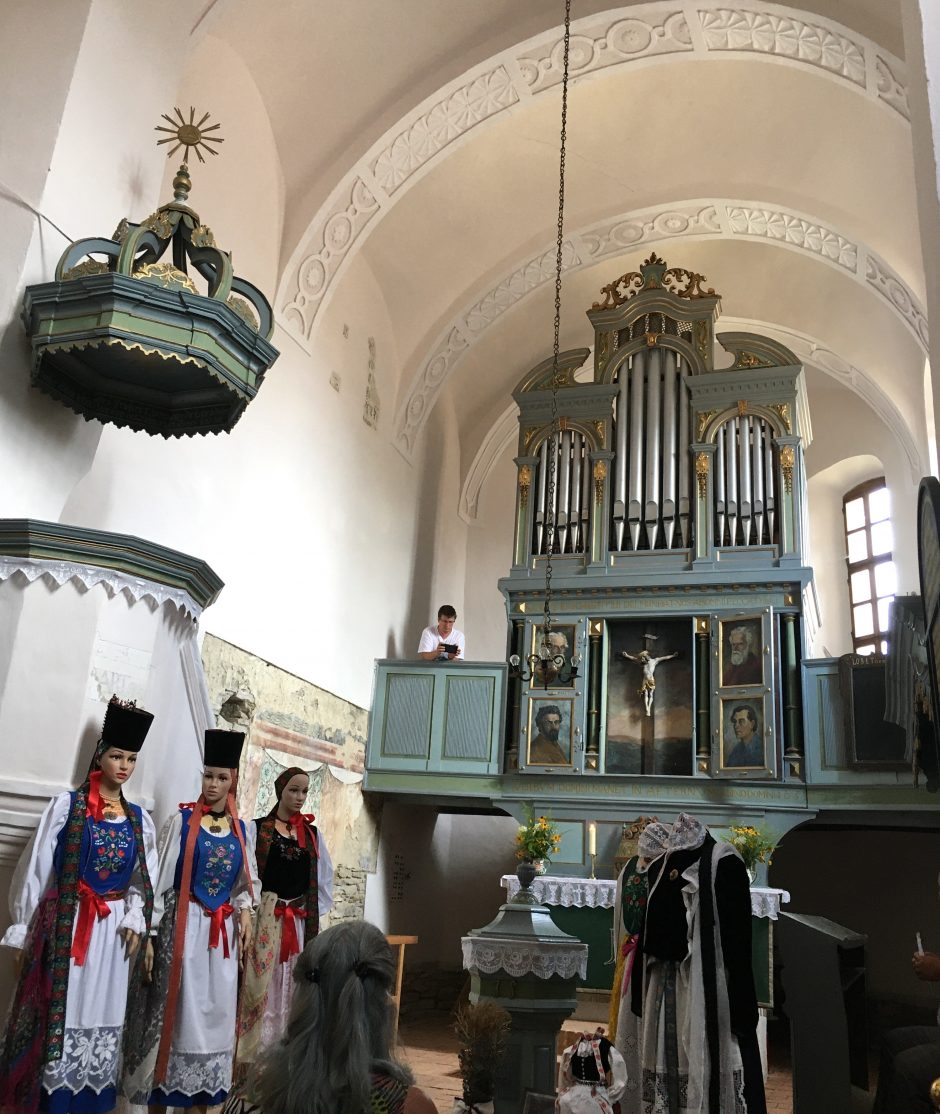
Although many have been converted to electric blowers, these organs were traditionally foot-pumped (not hand-pumped as in Northern Europe), via a sort of treadmill-and-grab-handle arrangement.
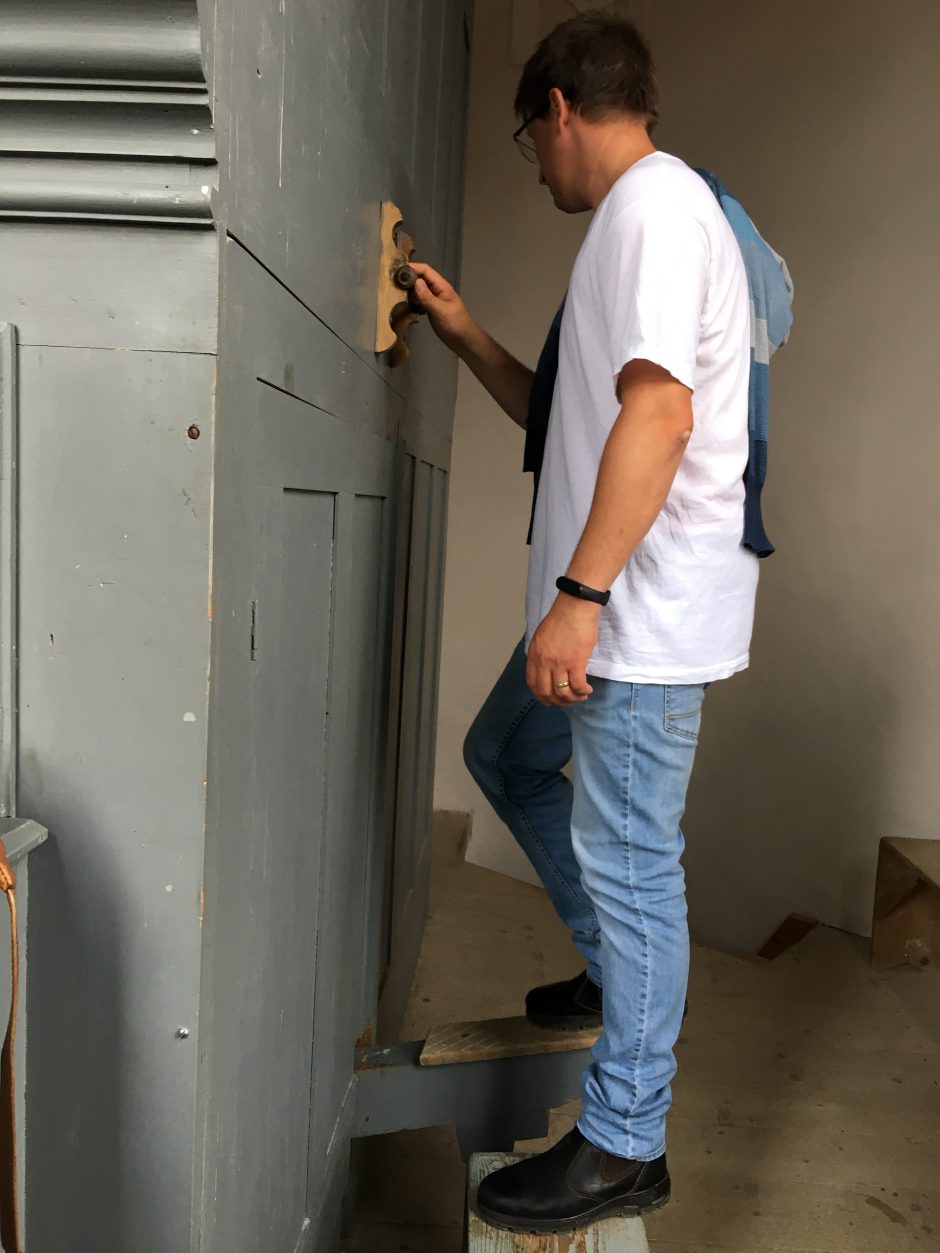
Bruno’s colleague very kindly kept pumping so I could play: more generous sight-lines here with the console on a gallery overlooking the church.
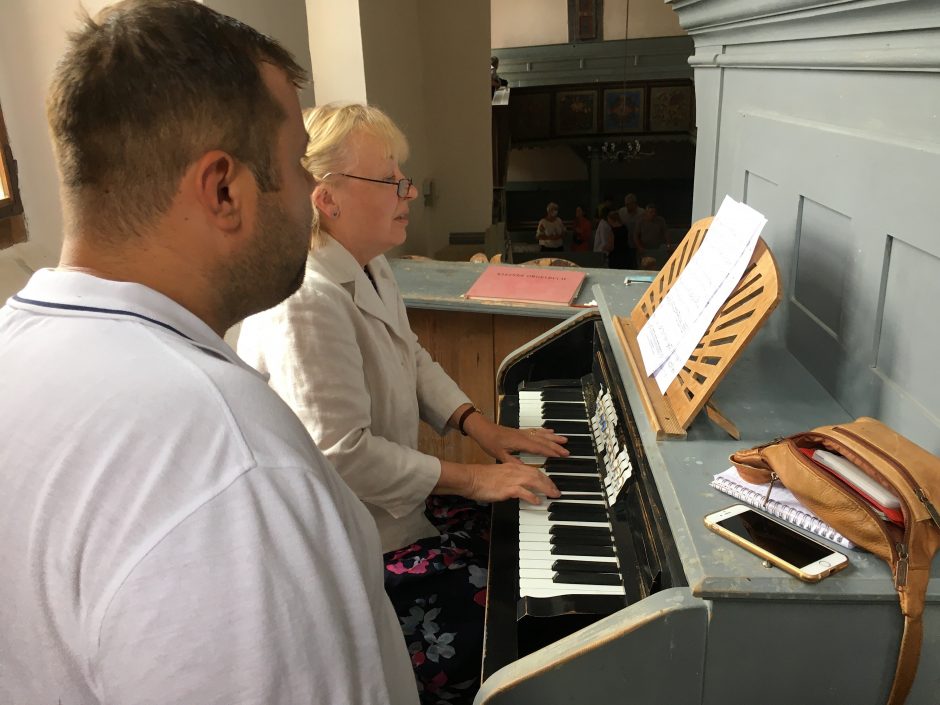
Crit
All the pedalboards in Romania are flat/straight, and my attempts to play this unfamiliar layout were a bit ham-footed. The ergonomics of the pedalboard, bench and console were not always ideally aligned, and here at Crit I was in danger of toppling nose first into the music desk, which was precariously suspended on a piece of wire. Slightly giving up on the pedals, I recorded a bit of Johann Gottfried Walther (1684-1748), so you can hear the clear direct sound typical of these small organs.
Bright sounds predominate, with lots of choice at the top of a principal chorus, including 1′ stops and some quite penetrating Mixtures.
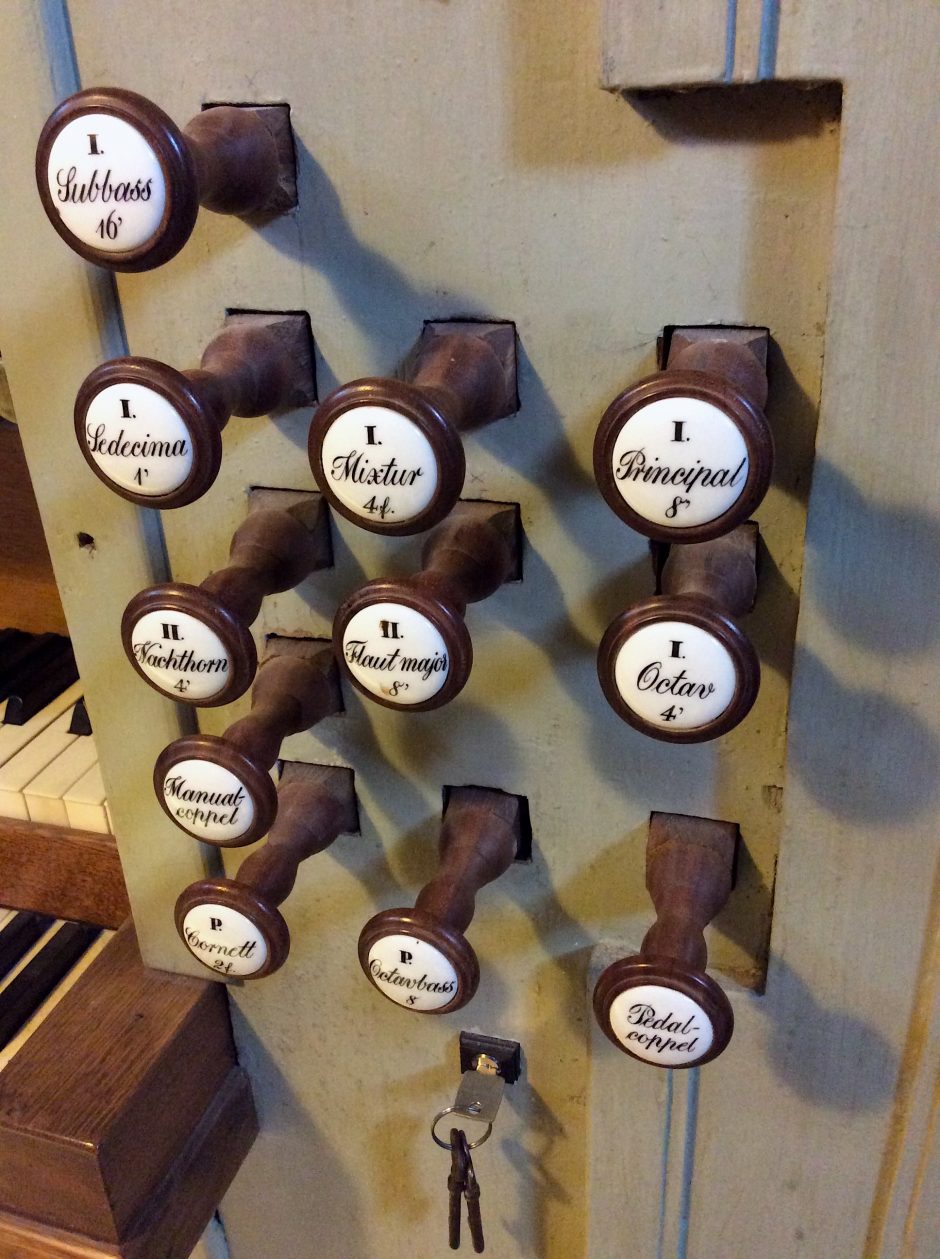
Malancrav
Not being quite as strict as their Northern European Lutheran cousins, the Saxon Lutherans were allowed to keep some iconography in the form of the spectactular altarpieces which grace many of these small churches, though the Virgin Mary was usually banished from centre stage.
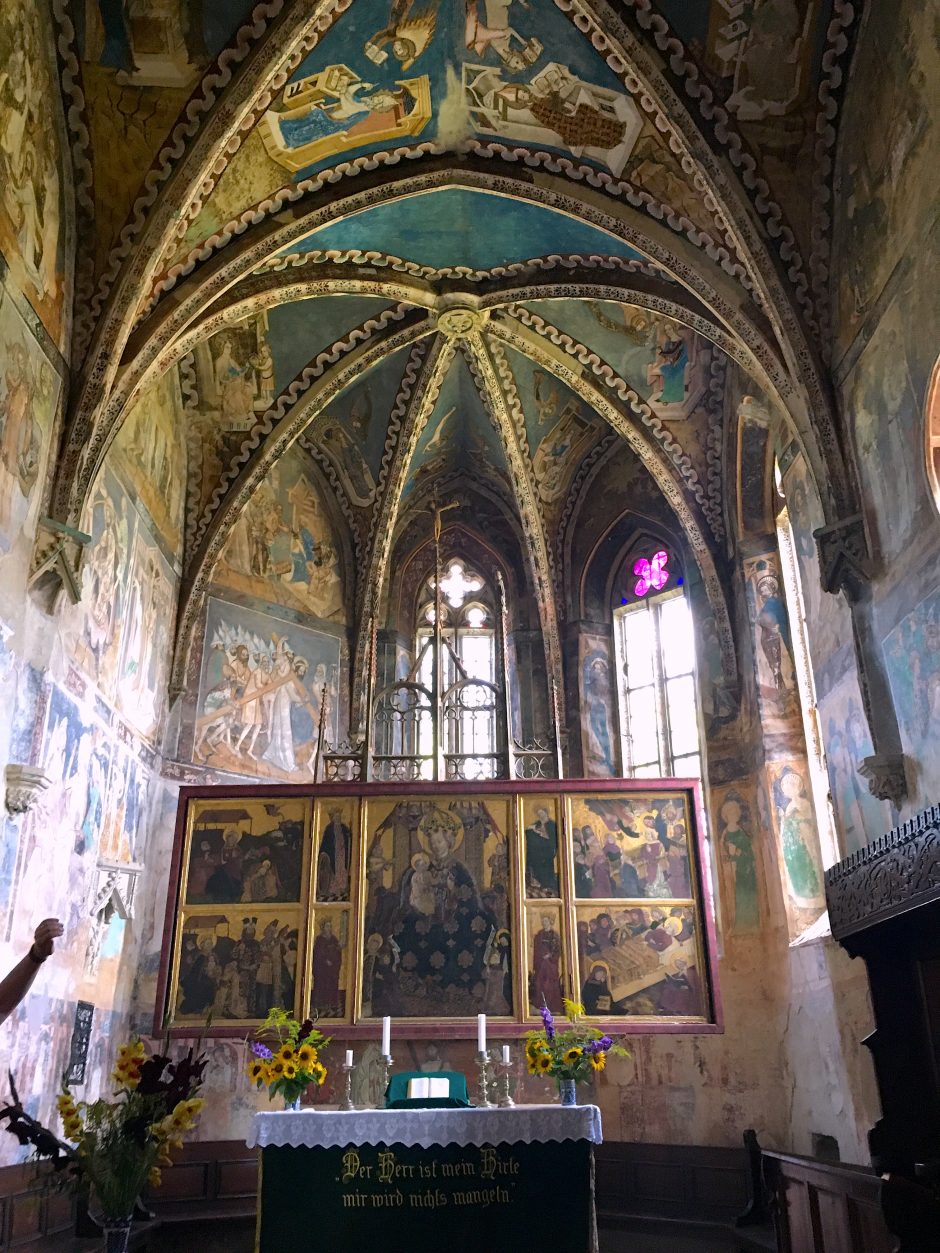
However, here in Malancrav, in a typically Transylvanian mix of cultures, the Lord of the Manor (a Catholic Hungarian) took a supportive interest in the (Lutheran) church on his estate. As a result the Gothic murals were not whitewashed out, but remain to this day. They have been dated to before 1405 by the earliest of the graffiti scratched around the apse.
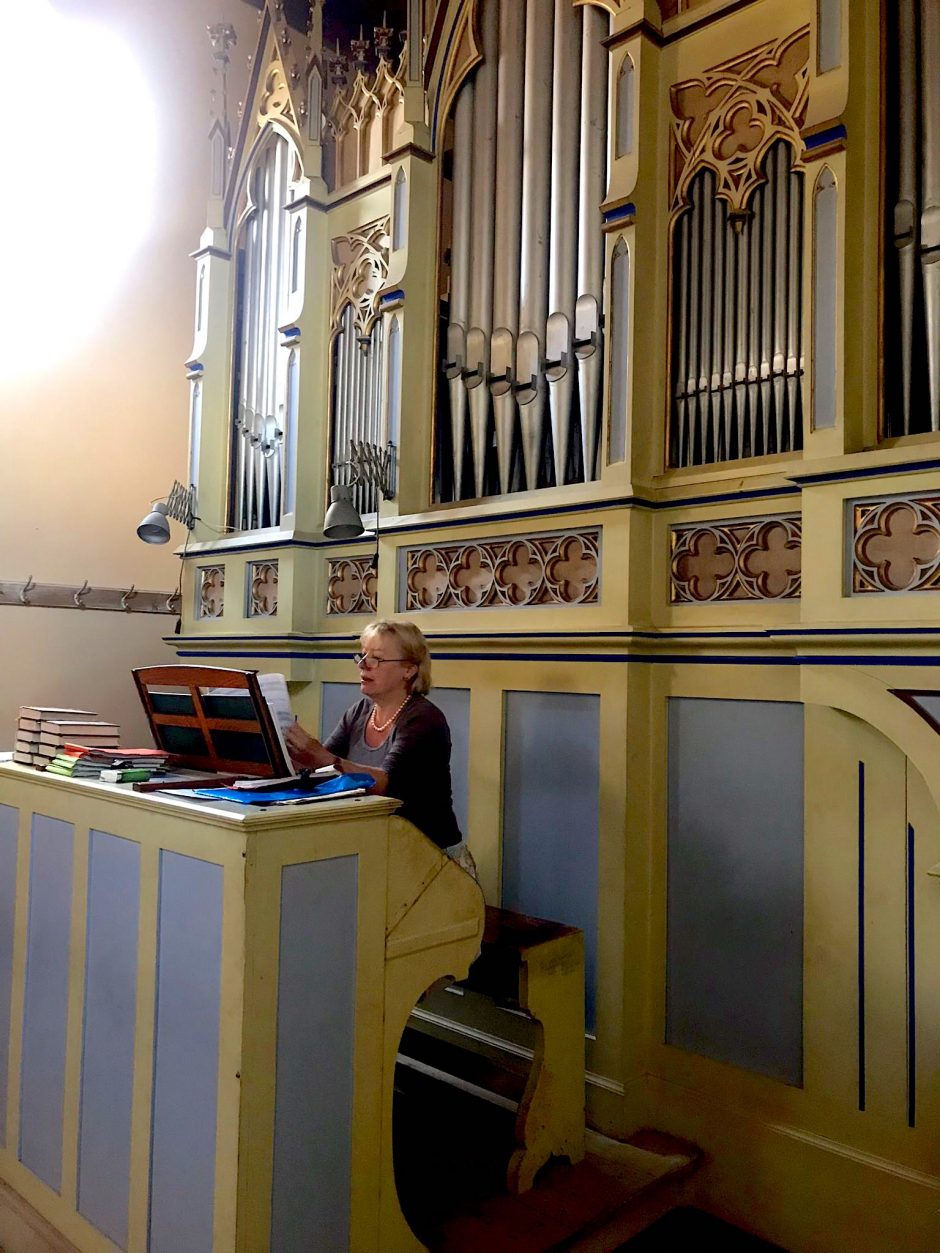
Few Saxon speakers remain in Transylvania (they were ‘exported’ by the Communists, an unpleasant tale) but services when they happen are still entirely in German, full of the texts and chorales familiar to Bach. On most of the consoles you’ll find a battered copy of what must be the Lutheran organists’ vade mecum, the Kleines Orgelbuch.
Opening it at random in Malancrav, I started playing, and the church custodian’s eyes lit up. She was in the choir here, but they don’t get an organist very often. Neither of us could speak each other’s native language, but I played, we both sang lustily through Erschienen ist der herrlich Tag, and the centuries slipped away.
Next time I’ll be writing about my visit to the Black Church of Brasov: about playing the four remarkable organs there, and explaining how they and others around the country managed to survive the clashes of Empires, two World Wars, and twenty years of communism.
And how fortunate we were to be introduced to Ramona Cazacu of My Romania, who tailor-made this whole trip for us, booking hotels, guest houses, trains, and suggesting lots of entrancing things to see quite apart from churches. Ramona’s companionable guides and drivers took us to places we would have struggled to find on our own, and I would never have made it up to a single organ loft if it hadn’t been for their essential roles as interpreters. We will be going back – for the walking perhaps next time? or even some bird-watching….
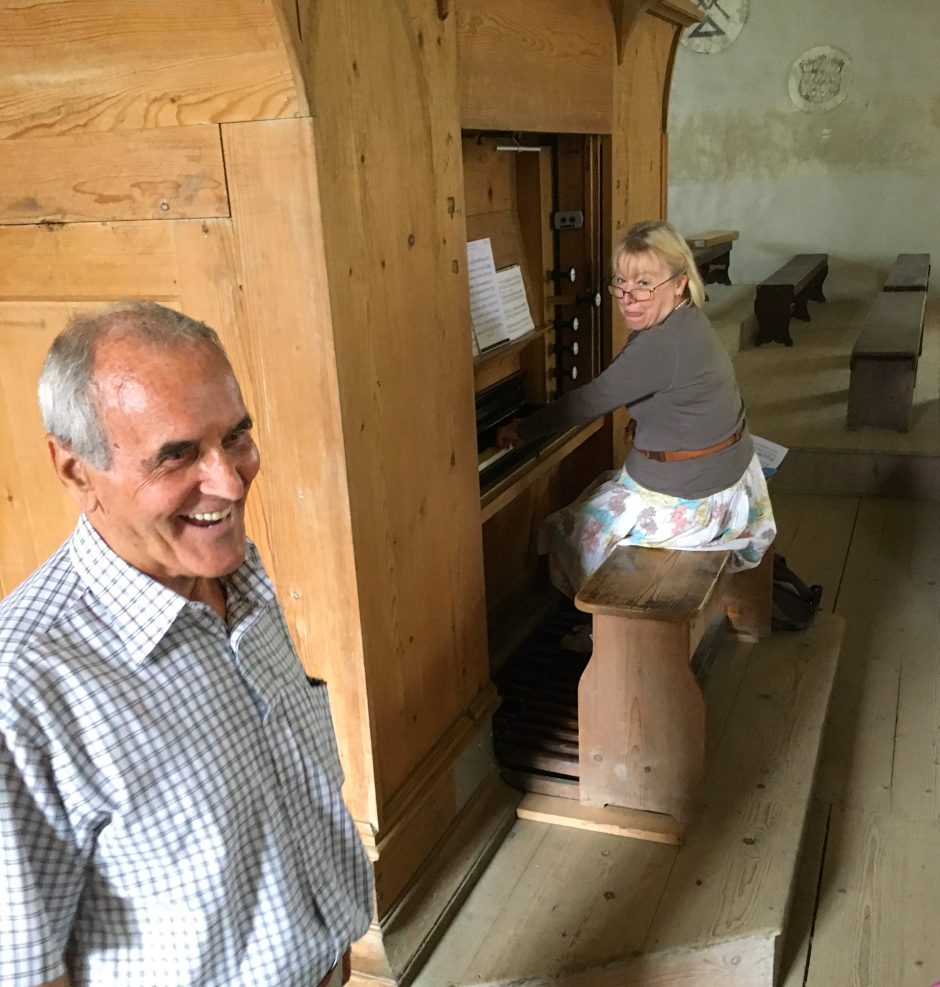
My thanks to the Church Custodians who allowed me up into the organ lofts and gave me permission to play. Pictured here is the kind custodian at Sighisoara who appears to be enjoying some joke with my husband, probably about hearing the same piece for the umpteenth time.

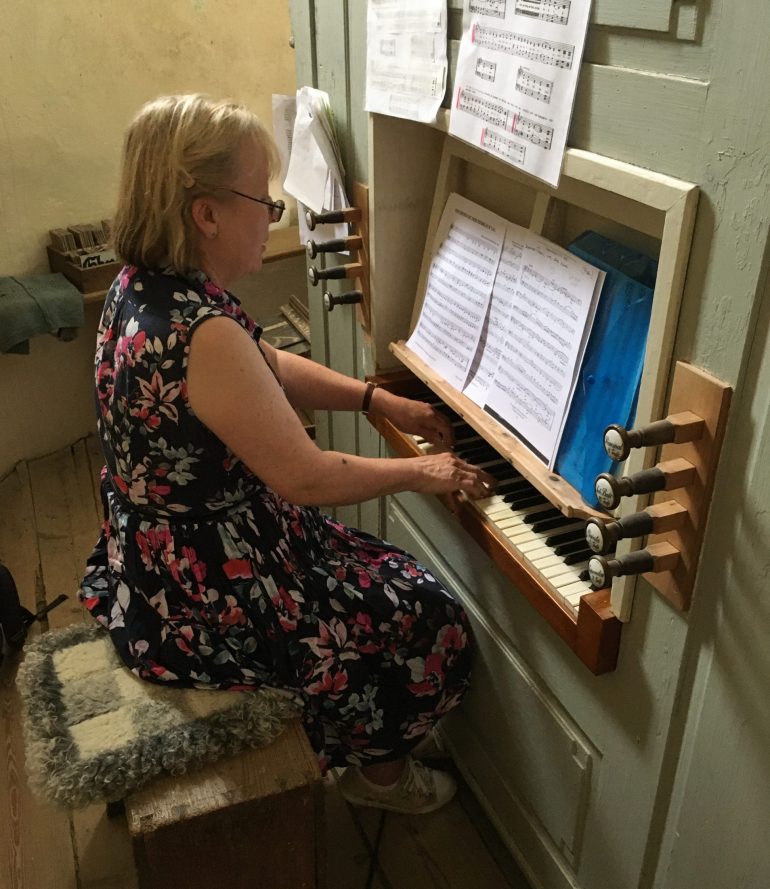
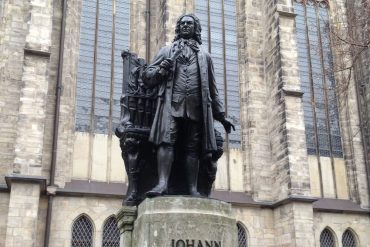
This is lovely Morwenna. Thank you for sending, lovely to listen on a Sunday morning.
xx Sarah
Very interesting reading, thank you for the insight into a part of Europe only now beginning to come into its own. Lucky you for having the chance to experience it.
This is a great read. J
PS I’ve subscribed
Most interesting. Brings back memories. Of out trip to Transylvanian villages. Peter & Elinor
Fascinating, thank you, Morwenna. This makes me want to go back to Transylvania to see the places you saw even if I probably wouldn’t hear all those organs. Your descriptions of the landscapes we saw took me back – it was lovely.
I really enjoyed reading this. Thank you.
What a wonderful holiday Morwenna. It looks the most amazing place with gorgeous instruments, and not a mention of Count Dracula!
We tried to avoid the whole Dracula thing. To be fair, the Romanians themselves don’t make a big deal out of it. It’s just the tourists.
Thank you, Morwenna. It’s a lovely read and it brings back wonderful memories. I really enjoyed the organ tour with you.
My mother learned to play the organ in Transylvania when she was young. Unfortunately doesn’t play anymore, but I recall going with her in Germany when she would play in the local church, when I was young. Thanks for taking me on a ride. Hopefully I will make it there one day.